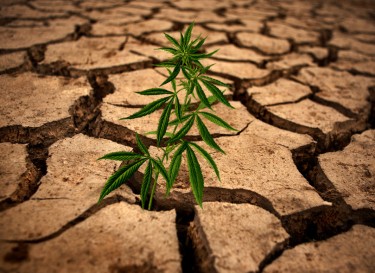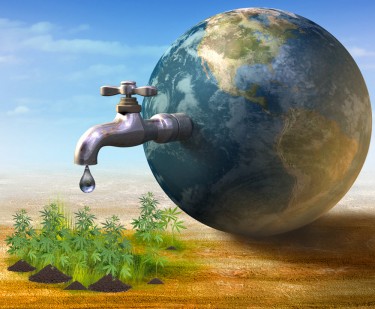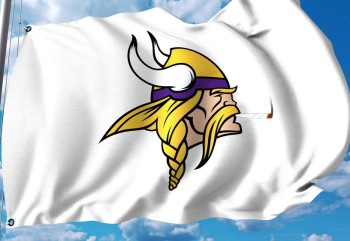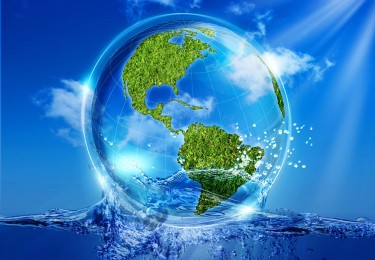
As we enter into our “hot period” here in the western hemisphere, we can see that some places are in desperate need of water.
Currently where I’m living we are experience a pretty intense drought with water rations occurring daily. I have to note that I do not live in the US, so don’t worry – it’s not some conspiracy or anything of the sort.
Nonetheless, this drought prompted me to look into other areas in the US that are potentially experiencing similar weather conditions, and whether this is something that we should be concerned about in the future?
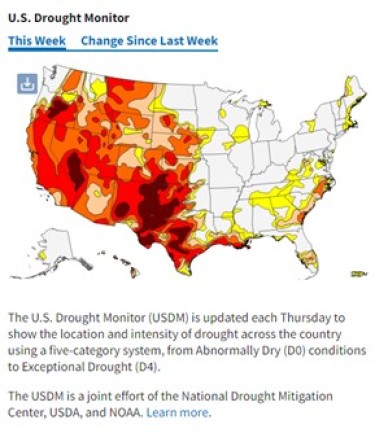
More importantly, I wanted to see what can be done and what is being done in order to create a sustainable future for everyone. I always hear about these environmental problems yet hardly ever do we see articles talking about in-depth solutions.
I believe, that we do have the opportunity to take some serious steps to persevere our world, reduce our need to consume from natural fresh water deposits and leave “drinking water” for people to consume.
In fact, most people don’t know that the vast majority of fresh water is not consumed by people – but by companies that use it to spray down or dilute whatever chemicals they are packaging for your consumption – YUM!
Before we get into all of that – WTF DOES THIS HAVE TO DO WITH CANNABIS?
I’m glad I forced you to ask this question because as you can see by the picture above, the area in the US that suffers from drought is the same area that happens to grow the most amount of cannabis. The entire West Coast is “green” from California to Washington, and even extending into Canada – that entire area grows a whole lot of reefer.
Depending on the methods of growing you are using, water consumption varies. However, according to one study reported on by MJBizDaily;
They found that the water demand for growing cannabis typically exceeds that of commodity crops by nearly double.
On average, the researchers found, a cannabis plant consumes an estimated 22.7 liters, or 6 gallons, of water per day during the growing season, which is typically 150 days long from June through October.
By comparison, wine grapes, which are an irrigated crop produced in the same region as many outdoor cannabis crops in Northern California, use an estimated 12.64 liters of water per day.
According to a 2019 survey in Humboldt County:
The water usage of outdoor cannabis cultivation in Northern California is 5.5 gallons per day per plant in August and 5.1 gallons per day per plant in September.
Indoor cultivation used 2.5 gallons per day per plant in August and 2.8 gallons per day per plant in September.
Irrigated agriculture in California is considered the largest water consumer, accounting for 70% to 80% of stored surface water.
As water scarcity continues to be a problem because of agricultural demands, population growth and climate change, the higher water needs for cannabis crops will challenge the marijuana and hemp industries while burdening the environment, researchers concluded. - SOURCE
According to some other studies, the usage of water for indoor facilities is lower, but the point of this article is not to poke at the findings of these studies – but to reiterate the fact that cannabis, and many other crops – require water to grow.
However, when our water reserves are running dry – people tend to want to blame cannabis for being the biggest factor in water consumption.
But what about Coca Cola? How about McDonalds? How about food packaging companies, CNC factories, etc? Industrial water use is also a very water dependent practice and while it’s easy to blame something like cannabis or walnuts for droughts – all of society is dependent on fresh water in one way or another.
For example, to make 500 ml of Coca Cola...you need roughly 1.9 liters of water.
Coca-Cola's water consumption
As a result, a small 500 ml bottle of Coca-Cola takes roughly 1.9 litres of water to make (though Coca-Cola prefers to cite their own average figure from 2013 to the effect that each litre of Coke uses 1.29 litres of water). – Source
While cannabis plants might require a lot of water, it’s dwarfed by the sheer amount of water that companies like Coca Cola consumes
1.8 billion coke drinks are produced per day
More than 10,000 Coca-Cola soft drinks are consumed per second. That massive tally includes Fanta, Dr. Pepper, and Sprite .Aug 28, 2018 - Source
Now that we’ve pointed out everyone’s shit-stains – let’s start talking about solutions. I for one have been thinking about one that could solve global water shortages in a matter of years – but I simply don’t understand how it isn’t a thing yet.
Do we really have a water problem?
Some people like to put the blame solely on cannabis for its “high water consumption”, but as we have pointed out – there are many other industries that also utilize a lot of water.
In an article on The Tower, they cite a specific report by the Department of National Intelligence (DNI) in which they highlighted these key findings;
During the next 10 years, many countries important to the United States will experience water problems—shortages, poor water quality, or floods—that will risk instability and state failure, increase regional tensions, and distract them from working with the United States on important US policy objectives.
Between now and 2040, fresh water availability will not keep up with demand absent more effective management of water resources. Water problems will hinder the ability of key countries to produce food and generate energy, posing a risk to global food markets and hobbling economic growth. As a result of demographic and economic development pressures, North Africa, the Middle East, and South Asia will face major challenges coping with water problems. – DNI Report
The article continues to illustrate that Fresh Water is not just a problem for some, but quickly becoming a global problem:
More than half the earth will soon be facing shortages. A set of maps provided by the National Intelligence Council shows that, by 2025, parts of the world whose water supplies will be “severely,” “extremely,” or “exceptionally” affected include the entire western half of the United States, a swath of the Middle East from Egypt to Pakistan, the whole of India, and about three-quarters of China. A decade from now, billions of people will face a severe crisis if nothing is done. – David Hazony, TheTower.Org
With such a grim outlook on what our future holds, it becomes imperative that we begin to work on solutions that can help us sustain ourselves during excessive dry periods. Fortunately, there is one country that has already pioneered a possible solution and perhaps, if we follow suit and begin to plan our agriculture in one way or another – we might be able to turn the problem into a solution that could make earth just a little bit better in the long run.
Two Major Solutions from Israel
The first one is probably a “no brainer” to some growers, but for the vast majority of agriculture (the largest consumer of water) – how you water your crops is important. Currently, the most popular methods include flood irrigation which is where the crop area is simply flooded with water, which allows it to grow.
However, a man by the name of Simcha Blass discovered another technique that started gaining popularity in the 1970s called “drip irrigation”, where well-placed nozzles would drip water near the area of the plant that provides the maximum intake of water.
In modern hydroponics, these techniques are often used – which is why the claim about cannabis water consumption varies depending on the operation. Nonetheless, this innovation helps reduce water consumption of plants between 40%-70% depending to some estimates.
When it comes to agriculture, this should become the standard. Potentially repurposing industrial spaces to vertically grow certain crops in order to allow the soil to heal & replenish itself could also work in tandem with the water conservation effort. Needless to say, we definitely need a lot more R & D within the fields of mass cultivation and with hydroponics and these innovative irrigation systems – we’re already doing “something” in order to diminish our waste.
But, as the report from the Department of National Intelligence suggest, that scattered rainfall and other factors might limit our access to fresh water. This is a problem, because once we run out of this – you can rest assured that violent warfare would follow suit. We never want to reach a limited thresh hold of fresh water…humanity would become savage instantly.
The Second Solution from Israel
Another thing that has perplexed me for years is a simple solution that hasn’t been scaled up due to the “cost” of it all. I’m talking about Desalination Plants.
While Israel worked hard on reducing their need for water, they also had to think about new resources to get water and considering that 71% of the earth’s surface is made up of water – we shouldn’t have a water problem really.
The big issue is logistics. Salt water cannot be consumed and while 91% of all the water on the planet can be found in the oceans, without proper treatment it is not safe to consume for humans, crops, or even for industrial applications.
This is where Israeli innovation shines once again. In the Article Cited above, they provide some insight on the history of desalination;
“Desalination has the feel of science, engineering, and alchemy combined,” writes Siegel. “The ancient Romans tried to purify seawater for their army, but their efforts never went far. During World War II, American scientists also began thinking about ways” to remove salt from seawater. In February 1964, President Lyndon Johnson gave a major speech about directing America’s resources toward finding the holy grail of affordable desalination, comparing the nation’s efforts to Israel’s—much to the fury of the Arab world. He even invited Israel’s Prime Minister, Levi Eshkol, to the White House for talks on the subject. But these efforts were hampered by high costs and the Vietnam War. The first experimental desalination plant in Israel didn’t go online until the 1980s. But by then, a major technological breakthrough was already in the works. – TheTower.Org
A US inventor by the name of Sidney Loeb invented the method of Reverse Osmosis, which occurs when you push the water through selective membranes. This separates salts and minerals from the fresh water and this technology is what helped the Israeli’s have a surplus of water in the middle of a desert.
Israel’s first Reverse Osmosis Desalination plant was concluded in 2005, and by 2014, half of the water consumed in the nation came from the process. They are currently developing more. But the most important aspect of all of this is that they have become immune to droughts. They have proven that there is a viable tech solution that can provide fresh drinking water while producing additional benefit such as trace metals & minerals that is separated such as lithium and magnesium and so forth.
One thing that the article hits right in the Bull’s Eye is the following Excerpt;
What does this mean for the world? It means that, suddenly, water scarcity has become something you can solve simply and decisively. All you need is a coastline and a lot of money, but nothing beyond the financial capacity of any national government. For the cost of a few fighter jets, you can build a world-class RO plant and pump the water into the system. Suddenly, water has transformed from a problem of natural resources to a problem of finding the political will and the budget. Today any country that doesn’t have enough water has only its leaders to blame. –TheTower.Org
The author is 100% correct in this assessment. The only reason there is a lack of water is because there is a lack of leadership addressing this. Some estimates put the cost of a highly functional desalination plant at a cool $1 billion per plant. This is roughly the cost of the one they built in San Diego.
Now imagine what would have happened if the United States spent $40 billion dollars (which was sent to Private Military Contractors in the Ukraine to fund a war) and rather spent it on developing desalination plants all over the East and West Coast of the US.
What if a few of those plants were placed in regions with notoriously low water fall…places like Somalia and other sectors with unusually high dry periods?
Could the US have solved the global water issue with the same budget they sent to Europe? Probably not! But it certainly would have gone a long way in making the US more water stable. They could have probably made the US become impervious to droughts, keeping food production on track despite the weather patterns.
This is also where hydroponics and vertical farming – which can reduce water consumption by up to 90% - and together we can begin to build a world that our children’s children could enjoy.
What about Industry?
There’s a reason I don’t like the idea of “Climate Change”. It’s an ethereal and unsolvable problem that seems to be raising funds but never actually getting anything done. We know that agriculture depends on water, and we know that we also don’t technically NEED Coca Cola in our lives.
Let me put it to you this way, if you had to choose to remove one of the two – Coca Cola would always get the ax because water is an essential.
Yet, we know that Coke utilizes billions of liters of water per day to produce their gasified sugar water and generate roughly $2 Billion Dollars in profits per month as reported by MacroTrends.com,
Coca-Cola gross profit for the twelve months ending March 31, 2022 was $24.183B, a 21.73% increase year-over-year.”
This is one company – albeit the largest soft drink manufacturer in the world - but when you take all of the profit from these companies (including cannabis firms) – it should be obvious that they would invest into this kind of technology.
However, considering that companies under the current model of Smithian Capitalism – profits is their highest priority. For now, they don’t want to spend on anything they don’t have to...therefore it’s more “cost effective” to consume our fresh water supplies instead.
And this is where the problem lies.
These larger corporations often benefit from government tax breaks and special deals they arrange with different States – that they are always the last to pick up the bill when it comes to social cost. In fact, these CEOs and other elite business people believe they alone are the ones who should be making decisions about how we ought to use our water, and why they are the best gatekeepers of this precious resource.
Water is, of course, the most important raw material we have today in the world. It’s a question of whether we should privatize the normal water supply for the population. And there are two different opinions on the matter. The one opinion, which I think is extreme, is represented by the NGOs, who bang on about declaring water a public right. That means that as a human being you should have a right to water. That’s an extreme solution. The other view says that water is a foodstuff like any other, and like any other foodstuff it should have a market value. Personally, I believe it’s better to give a foodstuff a value so that we’re all aware it has its price, and then that one should take specific measures for the part of the population that has no access to this water, and there are many different possibilities there.” – Nestle CEO, Peter Brabeck-Letmathe
I pasted the whole quote because it was obvious that after the Nestle company had some major pushback due to these statements, follow up Snopes articles “disproves” and “fact checked” his comments retroactively.
The fact of the matter is that water is a public right – especially since we ALL pay taxes that are used to subsidize companies like Nestle. To be fair, Nestle has been working on reducing their water consumption as pointed out in Statista.com
Nestlé’s total water withdrawals from all areas amounted to 98 million cubic meters in 2021. This was a decrease from the previous year of 17 million cubic meters, and a decrease of 40 million cubic meters compared with water withdrawals in 2016. - Statista
And according to MacroTrends.com Nestle raked in over $40 billion in 2021 in gross profits;
Nestle SA annual gross profit for 2021 was $45.954B, a 3.3% increase from 2020.
But more importantly, would a desalination plant actually benefit Nestlé’s bottom line? Considering that they utilized roughly 98 million cubic meters of water in 2021, and the Ashdod Desalination Plant in Israel produces 100 million cubic meters of water per year…it strikes me as odd as to why more companies haven’t invested in their own personal plants.
Being impervious to droughts means that you get market stability, and companies like Nestle, Coca Cola could make a minimal increase in product costs (something they do every year) to cover the expenses of these desalination plants.
How cannabis can lead the way
The Cannabis Industry is well positioned to begin doing programs like this. Environmental groups are raising hell over cannabis’ water consumption – however, if companies on the Western Coast came together to build a series of desalination plants aimed at supplanting natural water usage – the long term gains is undeniable.
Furthermore, excess desalination can help feed rivers, lakes, and other bodies of water currently affected by drought and over use from industry.
The fact of the matter is that whenever I hear about “water crises” I can only conclude that this is a fabricated “issue”….just like the “scarcity of food argument” where we’re able to simply throw away up to 50% of our food.
Our technology has reached a point where we can begin to leverage them to secure things like food and water for all…but in order to do this we need to remove a little bit of greed from our way of doing business, look at the long term gains, and perhaps make large businesses like Coca Cola, Nestle, etc…make their own water.
If we’re going to be subsidizing their companies, the least they can do is replenish the water they consume. It’s not like they are lacking the funds to achieve this.
I’d love to hear your solutions in the comment section.
DROUGHTS, CANNABIS, AND WATER, READ MORE...
THE CALIFORNIA DROUGHT PLAN DOES NOT INCLUDE WATER FOR WEED!
OR..
HOW DO YOU GROW CANNABIS IN A WATER SHORTAGE DROUGHT SEASON?

